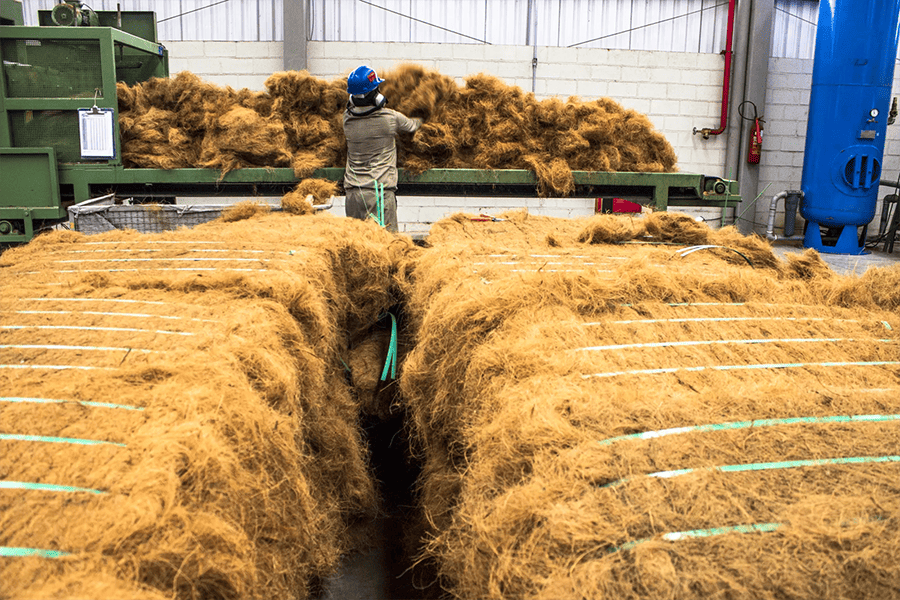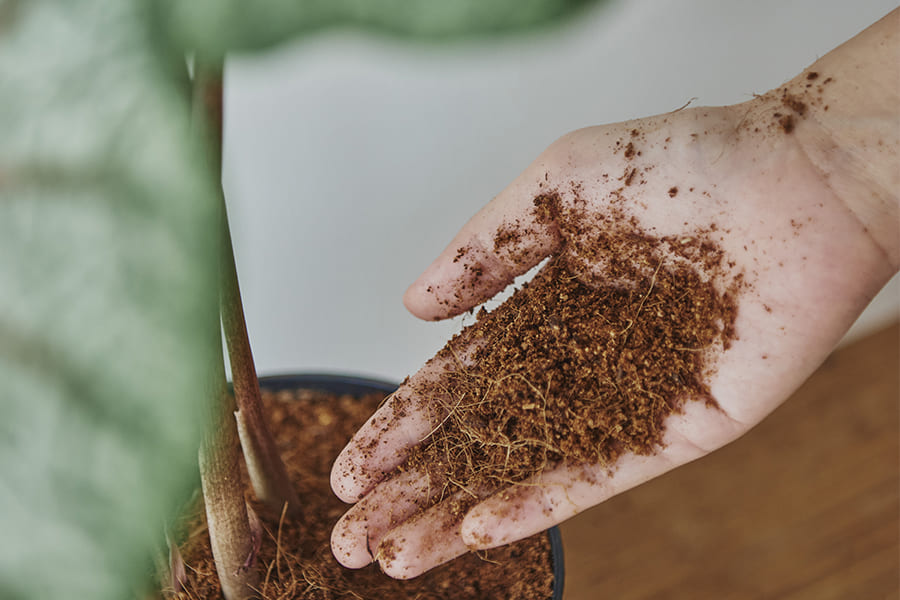BLOG POSTS & ARTICLES
The Benefits of Air Pruning: How Coco Coir Pots Improve Root Health?

Healthy root systems are the foundation of any thriving plant. They play a pivotal role in nutrient uptake, water absorption, and overall stability. Roots are responsible for anchoring the plant in the soil, while also exploring and accessing essential resources. In essence, the health of a plant's roots directly impacts its growth, development, and ability to withstand environmental stresses.
When roots are robust and well-nourished, the results are evident in lush foliage, vibrant blooms, and bountiful harvests. However, when roots are compromised by issues like poor aeration, root circling, or waterlogging, the plant's vitality is diminished, and it becomes more susceptible to diseases and other adversities.
As plant enthusiasts and gardeners, we are continually seeking innovative ways to enhance root health and, consequently, the overall well-being of our plants. One such innovation that has gained traction in recent years is the use of coco coir pots. These eco-friendly containers offer a compelling solution for promoting healthy root systems and addressing many of the challenges associated with traditional pots.
In this blog, we will delve deeper into the concept of air pruning and explore how coco coir pots harness this phenomenon to create optimal conditions for root health. We will examine the science behind coco coir's aeration properties, its practical advantages to novice and seasoned gardeners, and the positive environmental impact of choosing sustainable materials like coco coir. By the end of this discussion, you'll have a comprehensive understanding of why coco coir pots are gaining popularity as a smart choice for fostering thriving plants with vigorous root systems.
Understanding Air Pruning
Air pruning is a natural phenomenon that occurs when plant roots come into contact with air. When a plant is grown in a traditional pot made of materials like plastic or clay, its roots tend to follow the path of least resistance, which usually means circling around the inner wall of the pot. As roots grow, they continue to elongate, intertwining and spiralling, creating a dense, tangled mass within the limited space of the pot. This phenomenon is known as "root circling."
Air pruning, on the other hand, interrupts this conventional root growth pattern. When a plant is grown in a container designed for air pruning, such as a coco coir pot, the roots reach the pot's outer surface and are exposed to air. Instead of circling around endlessly, the root tips respond to this encounter with air by naturally self-pruning. Essentially, the root tip cells die back, creating a neat, bushier network of roots that spread outwards and delve deeper into the soil. This process mimics what occurs in nature when roots encounter obstacles like rocks or compacted soil.
Advantages of air pruning
Enhanced Nutrient and Water Uptake: When roots are air-pruned, they develop more fine, fibrous root tips that are better equipped to absorb nutrients and water efficiently. This results in improved nutrient uptake, reducing the risk of nutrient deficiencies and water stress.
Prevention of Root Circling: Air pruning prevents the formation of a dense, circling root mass. This eliminates the risk of roots becoming bound or strangulated, constraining nutrient and water flow, stunting growth, and weakening the plant.
Stimulated Lateral Root Growth: Air-pruned roots tend to branch out laterally, creating a broader root system that explores a larger soil volume. This lateral growth is beneficial for anchoring the plant and increasing its stability, especially during adverse weather conditions.
Resistance to Transplant Shock: Plants grown in containers with air pruning are more resilient during transplanting. The absence of circling roots means less disruption to the root system when moving the plant to a new location or pot, reducing transplant shock.
The Unique Structure of Coco Coir and Its Aeration Properties
Fibre Texture: Coco coir is made up of fine, long fibres that create a loose and airy texture. This texture allows for better airflow within the potting medium, promoting oxygen exchange to the root zone.
High Porosity: One of the standout features of coco coir is its high porosity. It can hold up to 10 times its weight in water while still allowing excess moisture to drain away. This high porosity prevents overwatering and reduces the risk of root rot, a common problem in traditional pots with poor drainage.
pH Neutral: Coco coir has a pH level close to neutral, which means it doesn't alter the soil's pH significantly. This is essential for maintaining an optimal pH range for nutrient uptake by plant roots.
Resistance to Compaction: Unlike some traditional potting soils that can become compacted over time, coco coir resists compaction. This property ensures that the potting medium remains loose and well-aerated, providing ample oxygen to the roots.
Comparative analysis of root systems in coco coir pots vs. traditional pots
Conclusion
Nurturing healthy root systems is at the heart of successful gardening, and coco coir pots have emerged as a game-changing solution. By harnessing the natural phenomenon of air pruning, these eco-friendly containers promote robust, well-nourished roots that translate into thriving, resilient plants. The advantages are clear: enhanced nutrient and water uptake, prevention of root circling, stimulated lateral root growth, and resistance to transplant shock.
With their unique structure, high porosity, and sustainability, coco coir pots stand out as a wise choice for both plant health and environmental well-being. So, whether you're a seasoned gardener or just starting, consider making the switch to coco coir pots to unlock the full potential of your beloved plants and contribute to a greener, healthier planet. Wishing you green and happy gardening!











__(3).jpg)









